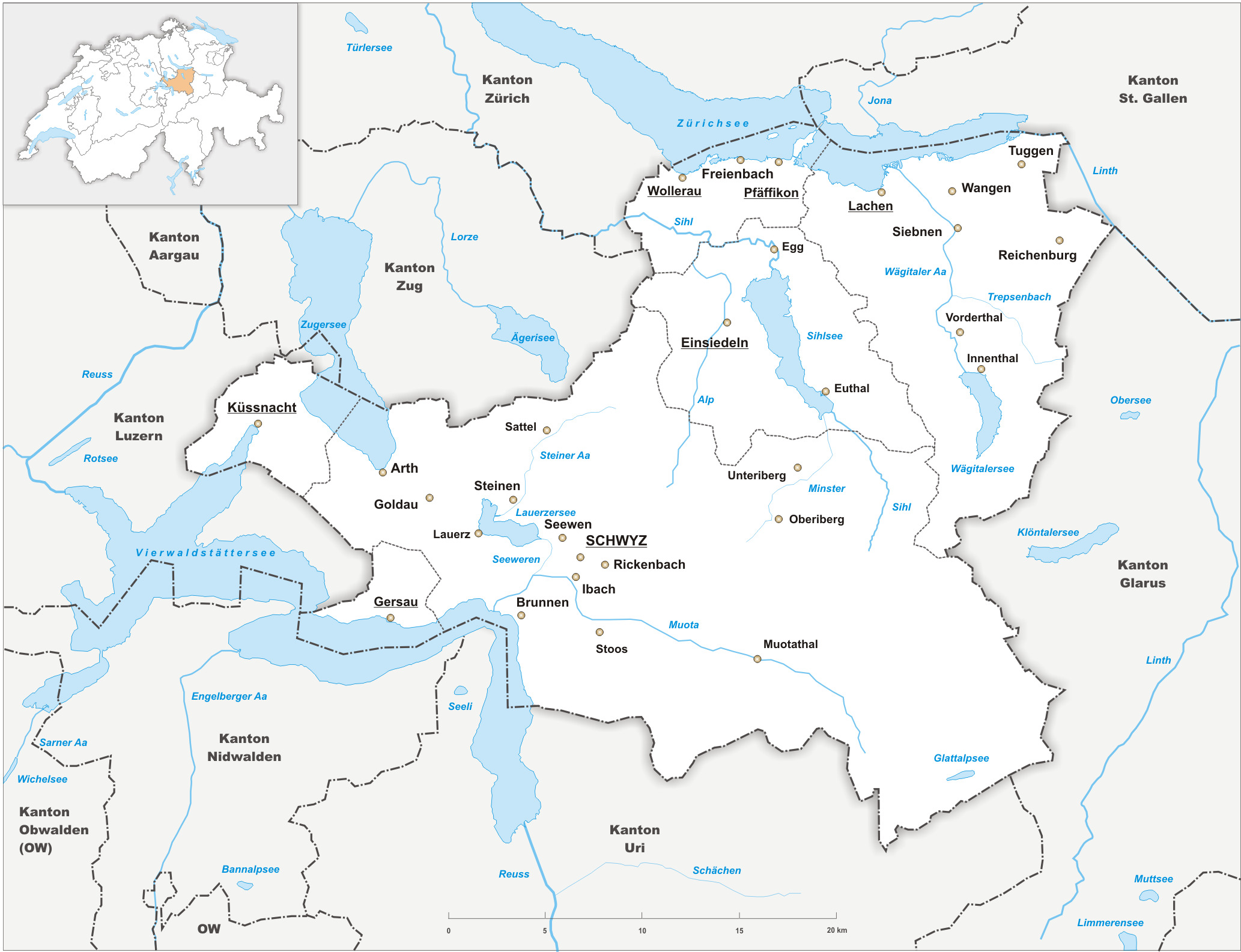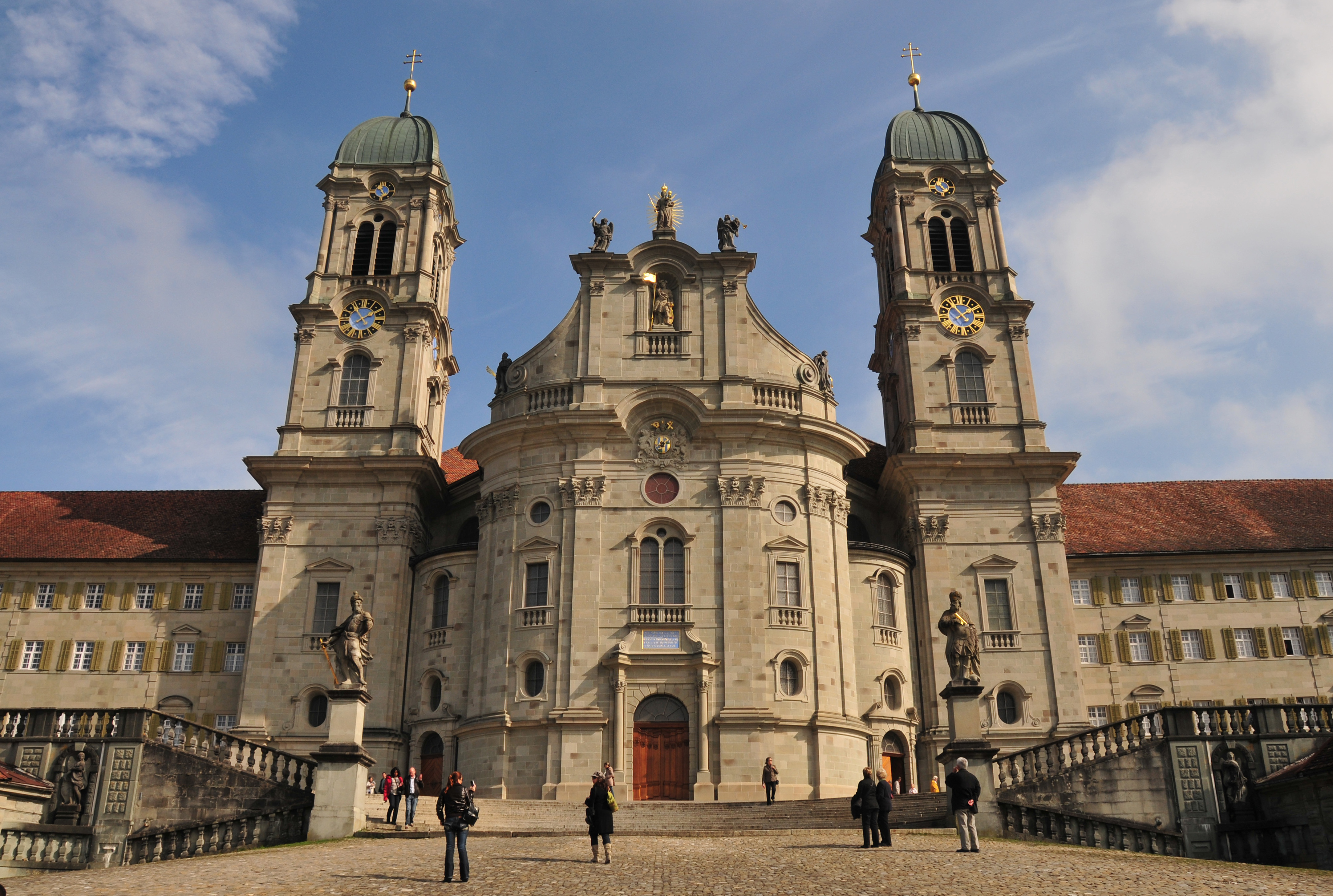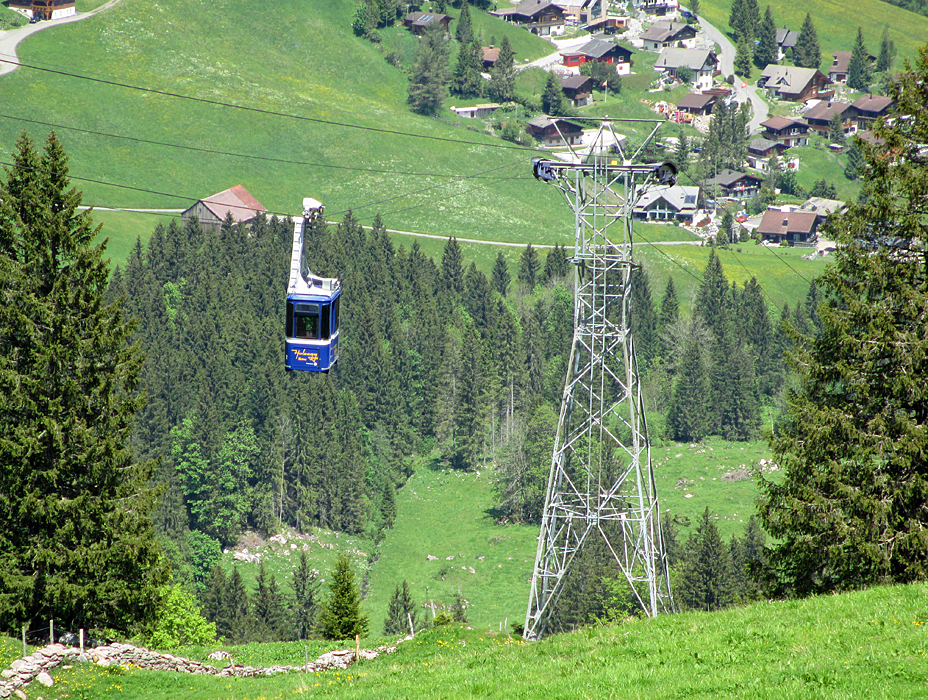|
Alp (river)
The Alp is a river in the Swiss canton of Schwyz and a tributary of the Sihl. It has a length of . The river rises on the northwestern flanks of the Brünnelistock and the northern flanks of the Kleiner and Grosser Mythen mountains near Brunni, and flows in generally northerly direction through the village of Alpthal Alpthal is a village and municipality in Schwyz District in the canton of Schwyz in Switzerland. Besides the village of Alpthal, the municipality includes the ski resort of Brunni, and settlement of Eigen. History Alpthal is first mentioned in 101 ..., the village of Trachslau, the town of Einsiedeln and the village of Biberbrugg. At Biberbrugg, the river Biber joins the Alp. Some north of Biberbrugg, at Dreiwässern the Alp flows into the Sihl. The valley between Brunni and Einsiedeln is called Alptal. External links * References Rivers of the canton of Schwyz Sihl Rivers of Switzerland {{Switzerland-river-stub ... [...More Info...] [...Related Items...] OR: [Wikipedia] [Google] [Baidu] |
Grosser Mythen
The Grosser Mythen (also ''Grosse Mythe'') is a mountain in the Schwyzer Alps of Central Switzerland. The mountain lies in the canton of Schwyz, to the east of the town of Schwyz, and to the south of the village of Alpthal in the valley of the river Alp. It is accessible from the Holzegg by a hiking trail which is opened during the summer months only. Geologically the Mythen is a penninic Klippe. The name is pronounced �miːtən it is in origin the plural referring to the Grosser and Kleiner Mythen collectively, each of which had the name ''Mythe'' (feminine) in the singular. The name is unrelated to the now-homographic German word for "myth"; Weibel (1973) derives it from Latin ''meta Meta (from the Greek μετά, '' meta'', meaning "after" or "beyond") is a prefix meaning "more comprehensive" or "transcending". In modern nomenclature, ''meta''- can also serve as a prefix meaning self-referential, as a field of study or ende ...'' "cone, pyramid". Until the lat ... [...More Info...] [...Related Items...] OR: [Wikipedia] [Google] [Baidu] |
Sihl
The Sihl is a Swiss river that rises near the Druesberg mountain in the canton of Schwyz, and eventually flows into the Limmat in the centre of the city of Zürich. It has a length of , including the Sihlsee reservoir, through which the river flows. Water is abstracted from the river at the Sihlsee, leading to decreased downstream water flows and a consequent reduction in water quality. The river flows through, or along the border of, the cantons of Schwyz, Zürich and Zug. The main settlements of the Sihl Valley are all in the canton of Zürich, and include the towns of Langnau am Albis and Adliswil, along with a south-western segment of the city of Zürich. Above Langnau am Albis, some from the confluence with the Limmat, there are no major settlements alongside the river, and only a few small villages. Whilst the town of Einsiedeln is situated close to the Sihlsee, it is actually in the valley of a tributary river, the Alp. Etymology The first written reference to the n ... [...More Info...] [...Related Items...] OR: [Wikipedia] [Google] [Baidu] |
Canton Of Schwyz
The canton of Schwyz (german: Kanton Schwyz rm, Chantun Sviz; french: Canton de Schwytz; it, Canton Svitto) is a canton in central Switzerland between the Alps in the south, Lake Lucerne to the west and Lake Zürich in the north, centred on and named after the town of Schwyz. It is one of the founding cantons of Switzerland; Switzerland's name is derived from the name of the canton, and the flag of Switzerland from its coat of arms. For the history of the name, see Schwyz. The Swiss Federal Charter is on display in Schwyz. Northeast of the town of Schwyz is Einsiedeln Abbey. History Prehistory to the Roman era The earliest traces of humans in Schwyz are from the Upper Paleolithic and Early Mesolithic, or about 12,500 BC. An excavation of the karst caves in the valley of the Muota river (''Muotatal'') revealed numerous sites, some dating to the Younger Dryas period (c. 10,000 BC). The alpine meadows at Bödmeren, Twärenen and Silberen were Stone Age hunter-gather ... [...More Info...] [...Related Items...] OR: [Wikipedia] [Google] [Baidu] |
River
A river is a natural flowing watercourse, usually freshwater Fresh water or freshwater is any naturally occurring liquid or frozen water containing low concentrations of dissolved salts and other total dissolved solids. Although the term specifically excludes seawater and brackish water, it does include ..., flowing towards an ocean, sea, lake or another river. In some cases, a river flows into the ground and becomes dry at the end of its course without reaching another body of water. Small rivers can be referred to using names such as Stream#Creek, creek, Stream#Brook, brook, rivulet, and rill. There are no official definitions for the generic term river as applied to Geographical feature, geographic features, although in some countries or communities a stream is defined by its size. Many names for small rivers are specific to geographic location; examples are "run" in some parts of the United States, "Burn (landform), burn" in Scotland and northeast England, and "be ... [...More Info...] [...Related Items...] OR: [Wikipedia] [Google] [Baidu] |
Switzerland
; rm, citad federala, links=no). Swiss law does not designate a ''capital'' as such, but the federal parliament and government are installed in Bern, while other federal institutions, such as the federal courts, are in other cities (Bellinzona, Lausanne, Lucerne, Neuchâtel, St. Gallen a.o.). , coordinates = , largest_city = Zurich , official_languages = , englishmotto = "One for all, all for one" , religion_year = 2022 , religion_ref = , religion = , demonym = , german: link=no, Schweizer/Schweizerin, french: link=no, Suisse/Suissesse, it, svizzero/svizzera or , rm, Svizzer/Svizra , government_type = Federal assembly-independent directorial republic , leader_title1 = Federal Council , leader_name1 = , leader_title2 = , leader_name2 = Viktor Rossi , legislature = Federal Assembly , upper_house = Counci ... [...More Info...] [...Related Items...] OR: [Wikipedia] [Google] [Baidu] |
Canton Of Schwyz
The canton of Schwyz (german: Kanton Schwyz rm, Chantun Sviz; french: Canton de Schwytz; it, Canton Svitto) is a canton in central Switzerland between the Alps in the south, Lake Lucerne to the west and Lake Zürich in the north, centred on and named after the town of Schwyz. It is one of the founding cantons of Switzerland; Switzerland's name is derived from the name of the canton, and the flag of Switzerland from its coat of arms. For the history of the name, see Schwyz. The Swiss Federal Charter is on display in Schwyz. Northeast of the town of Schwyz is Einsiedeln Abbey. History Prehistory to the Roman era The earliest traces of humans in Schwyz are from the Upper Paleolithic and Early Mesolithic, or about 12,500 BC. An excavation of the karst caves in the valley of the Muota river (''Muotatal'') revealed numerous sites, some dating to the Younger Dryas period (c. 10,000 BC). The alpine meadows at Bödmeren, Twärenen and Silberen were Stone Age hunter-gather ... [...More Info...] [...Related Items...] OR: [Wikipedia] [Google] [Baidu] |
Kleiner Mythen
The Kleiner Mythen is a mountain in the Schwyzer Alps of Central Switzerland. The mountain lies in the canton of Schwyz, to the east of the town of Schwyz, to the south of the village of Alpthal in the valley of the Alp river, and to the north of the Grosser Mythen The Grosser Mythen (also ''Grosse Mythe'') is a mountain in the Schwyzer Alps of Central Switzerland. The mountain lies in the canton of Schwyz, to the east of the town of Schwyz, and to the south of the village of Alpthal in the valley of t .... References External links Kleiner Mythern on Hikr Mountains of the Alps Mountains of Switzerland Mountains of the canton of Schwyz One-thousanders of Switzerland {{Schwyz-geo-stub la:Mythen eo:Mythen ... [...More Info...] [...Related Items...] OR: [Wikipedia] [Google] [Baidu] |
Brunni
Alpthal is a village and municipality in Schwyz District in the canton of Schwyz in Switzerland. Besides the village of Alpthal, the municipality includes the ski resort of Brunni, and settlement of Eigen. History Alpthal is first mentioned in 1018 as ''Albetal''. A branch of the Camino de Santiago pilgrimage route connected Einsiedeln with Schwyz via Alpthal and the Haggenegg. Winter tourism first came to Alpthal in 1950, with the opening of the cable car from Brunni to the Holzegg. Brunni acquired its first ski lift in 1964, and the Brunni-Haggenegg ski area was commissioned in 1974. Geography The village of Alpthal is located in the upper reaches of the Alptal, the valley of the river Alp upstream from Einsiedeln. Also within the municipality of Alpthal are the popular ski resort of Brunni, higher up the valley, and the settlement of Eigen, down the valley. To the north and beyond Eigen, the Alp flows through the village Trachslau and further through the town of Einsied ... [...More Info...] [...Related Items...] OR: [Wikipedia] [Google] [Baidu] |
Alpthal
Alpthal is a village and municipality in Schwyz District in the canton of Schwyz in Switzerland. Besides the village of Alpthal, the municipality includes the ski resort of Brunni, and settlement of Eigen. History Alpthal is first mentioned in 1018 as ''Albetal''. A branch of the Camino de Santiago pilgrimage route connected Einsiedeln with Schwyz via Alpthal and the Haggenegg. Winter tourism first came to Alpthal in 1950, with the opening of the cable car from Brunni to the Holzegg. Brunni acquired its first ski lift in 1964, and the Brunni-Haggenegg ski area was commissioned in 1974. Geography The village of Alpthal is located in the upper reaches of the Alptal, the valley of the river Alp upstream from Einsiedeln. Also within the municipality of Alpthal are the popular ski resort of Brunni, higher up the valley, and the settlement of Eigen, down the valley. To the north and beyond Eigen, the Alp flows through the village Trachslau and further through the town of Einsie ... [...More Info...] [...Related Items...] OR: [Wikipedia] [Google] [Baidu] |
Trachslau
Trachslau is a village inside the municipality of Einsiedeln, in the Swiss canton of Schwyz. The village is in the flow of the Alp river The Alp is a river in the Swiss canton of Schwyz and a tributary of the Sihl. It has a length of . The river rises on the northwestern flanks of the Brünnelistock and the northern flanks of the Kleiner and Grosser Mythen mountains near Brunni, a .... First documented in 1331 as Trechsellum. References Sources * Die Kunstdenkmäler des Kantons Schwyz, Band I: Die Bezirke Einsiedeln, Höfe und March. (= Kunstdenkmäler der Schweiz. Band 1). Hrsg. von der Gesellschaft für Schweizerische Kunstgeschichte GSK. Bern 1927. * Die Kunstdenkmäler des Kantons Schwitz. Neue Ausgabe III.II. Einsiedeln II. Dorf und Viertel Einsiedeln. Hrsg. von der Gesellschaft für Schweizerische Kunstgeschichte GSK. Bern 203, (Kunstdenkmäler der Schweiz Band 101). . Villages in the canton of Schwyz {{Schwyz-geo-stub ... [...More Info...] [...Related Items...] OR: [Wikipedia] [Google] [Baidu] |
Einsiedeln
Einsiedeln () is a municipality and district in the canton of Schwyz in Switzerland known for its monastery, the Benedictine Einsiedeln Abbey, established in the 10th century. History Early history There was no permanent settlement in the area prior to the early medieval period, but numerous artefacts left by prehistoric hunters, dated to the Mesolithic to Bronze Age were recovered. The original " hermitage" is associated with St. Meinrad, a Benedictine monk family of the Counts of Hohenzollern. According to legend, Meinrad lived on the slopes of Mt. Etzel from 835 until his death in 861. During the next eighty years Saint Meinrad's hermitage was never without one or more hermits emulating his example. One of the hermits, named Eberhard, previously Provost of Strasburg, erected a monastery and church there, of which he became first abbot. Work on the monastery is said to have begun in 934. [...More Info...] [...Related Items...] OR: [Wikipedia] [Google] [Baidu] |





